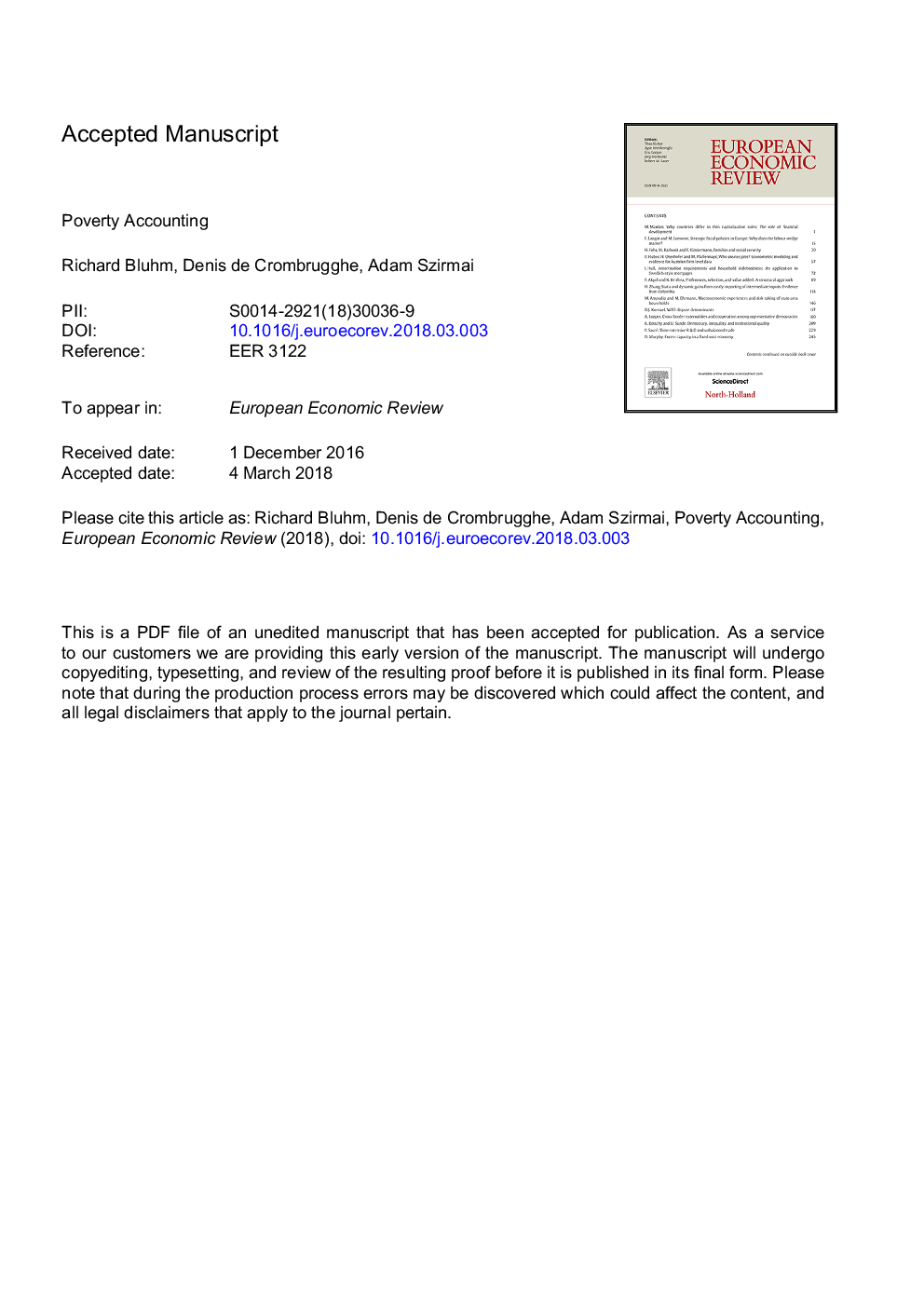ترجمه فارسی عنوان مقاله
حسابداری فقر
عنوان انگلیسی
Poverty accounting
| کد مقاله | سال انتشار | تعداد صفحات مقاله انگلیسی |
|---|---|---|
| 129540 | 2018 | 33 صفحه PDF |
منبع

Publisher : Elsevier - Science Direct (الزویر - ساینس دایرکت)
Journal : European Economic Review, Volume 104, May 2018, Pages 237-255
ترجمه چکیده
این مقاله یک چارچوب جدید برای حسابداری فقر، یعنی تجزیه فقر به اجزای مجاور آن ارائه می دهد. با استفاده از نظرسنجی های جمع آوری شده از 124 کشور، ما تاثیرات بالقوه رشد درآمد و توزیع مجدد را بر میزان فقر و همچنین میزان مشارکت واقعی آنها در کاهش فقر در طول دوره ای از سال های 1981 تا 2010 برآورد می کنیم. رویکرد پاسخی ما نشان می دهد که تاثیرات بالقوه بسیار غیر خطی و در مناطق و زمان متفاوت است. اگر غیر خطی و تنوع نیاز به توجه داشته باشید، اگر برآوردهای تجربی به منظور اطلاع سیاست توسعه است. گرچه رشد تاریخی نقش اصلی در کاهش فقر را ایفا می کند، ما دریافتیم که نابرابری اولیه یک نظارت قوی بر تاثیر رشد است. در واقع، در دوران هزاره، هر دو در 2 دلار و در نرخ 1.25 دلار در روز، فقر به سوی رشد طرفدار فقر تغییر کرده است. با این وجود، پیش بینی های ما از میزان فقر تا سال 2030 نشان می دهد که پایان فقر شدید در یک نسل، همانطور که در اهداف توسعه پایدار مطرح شده، بعید است که تحقق یابد.

